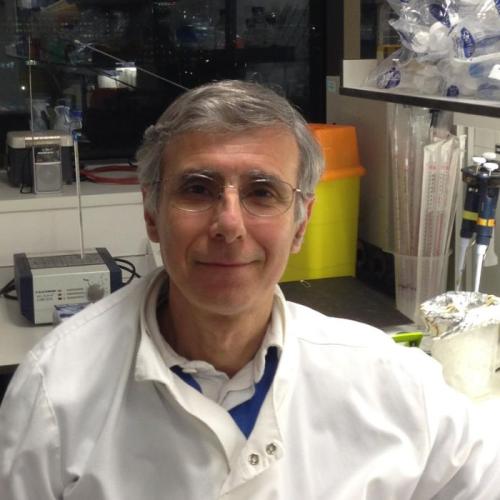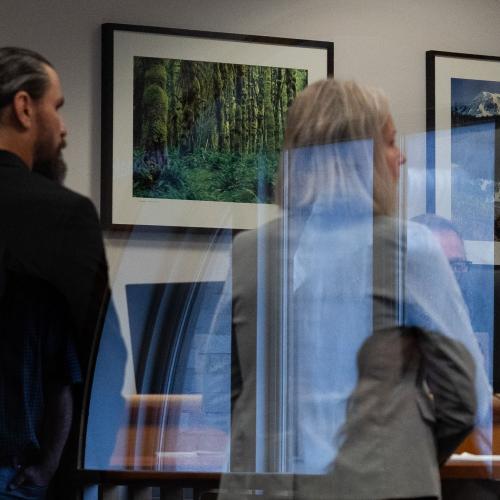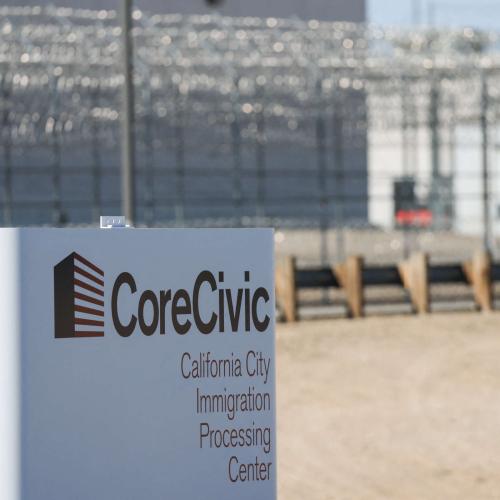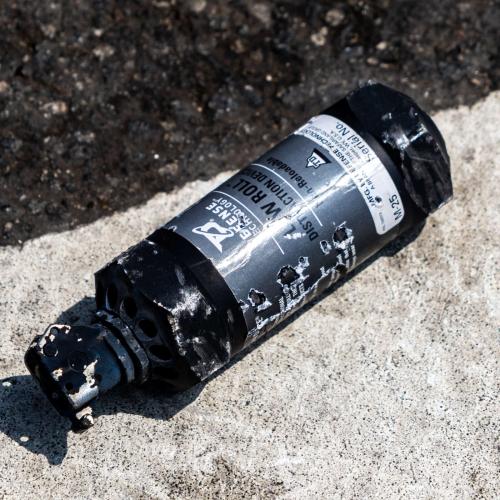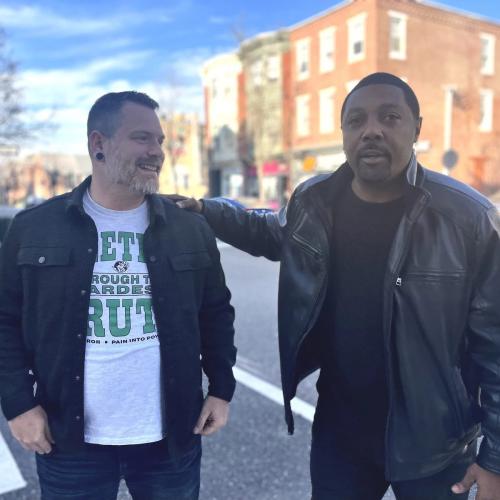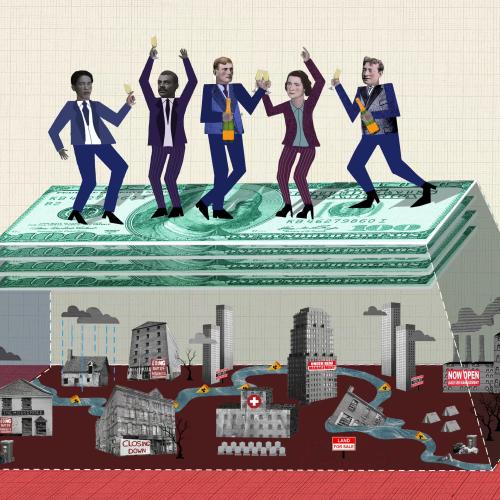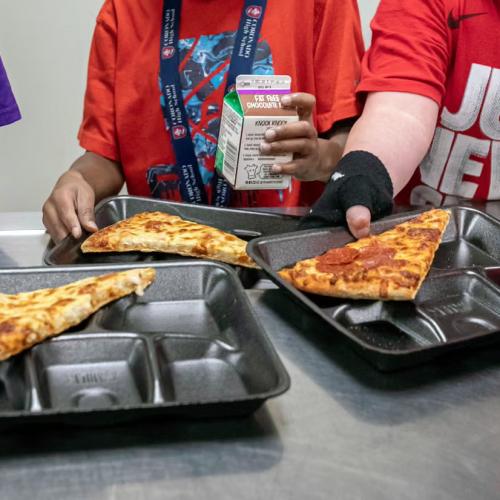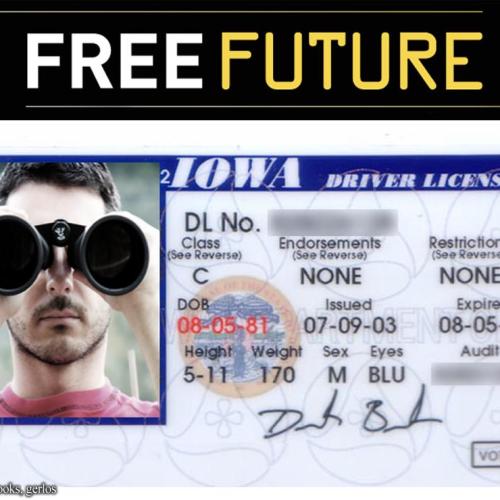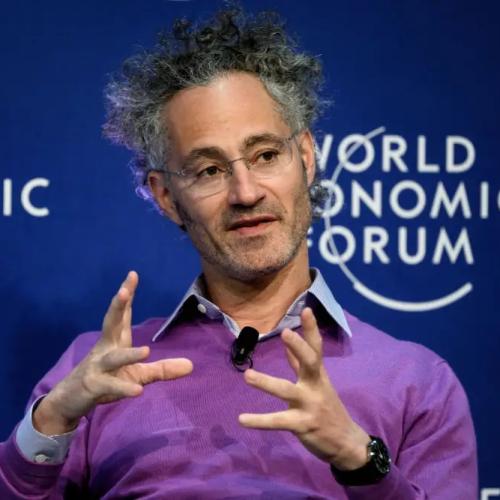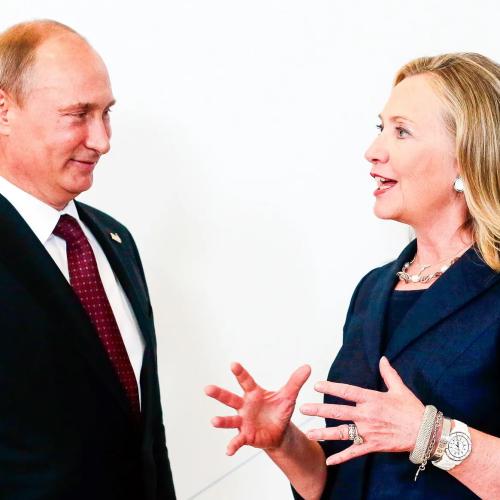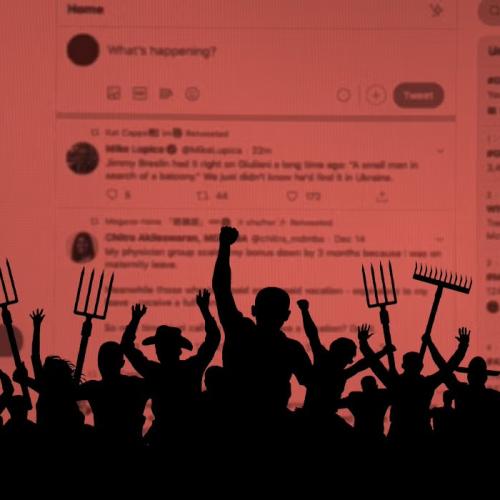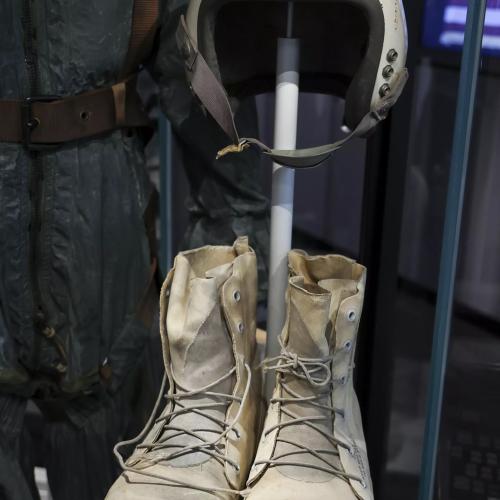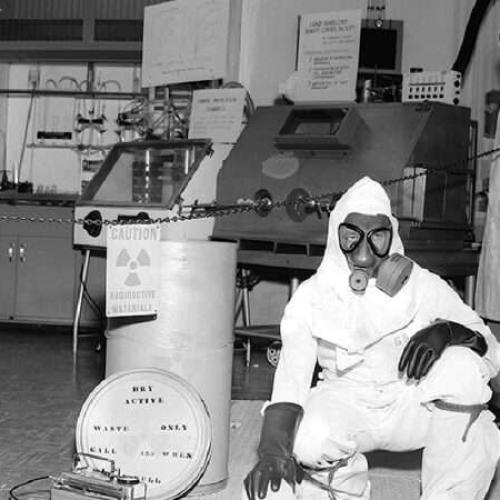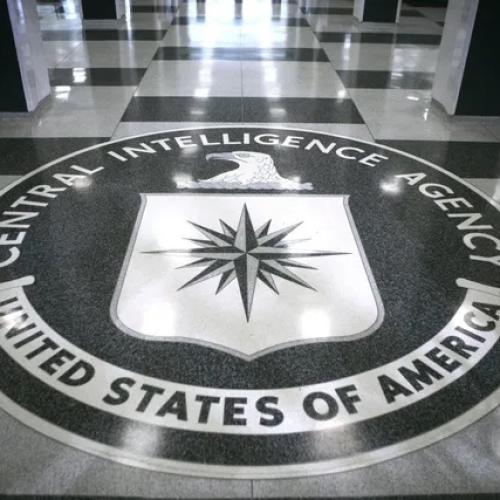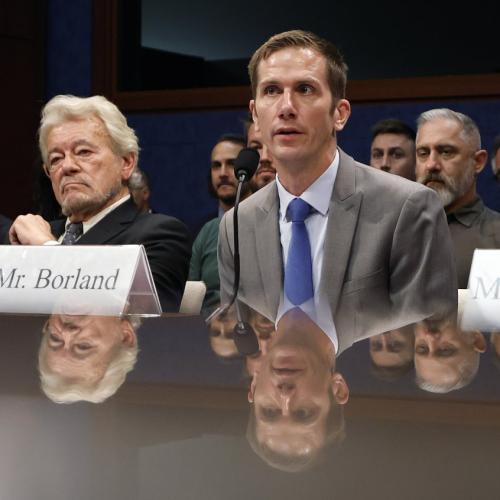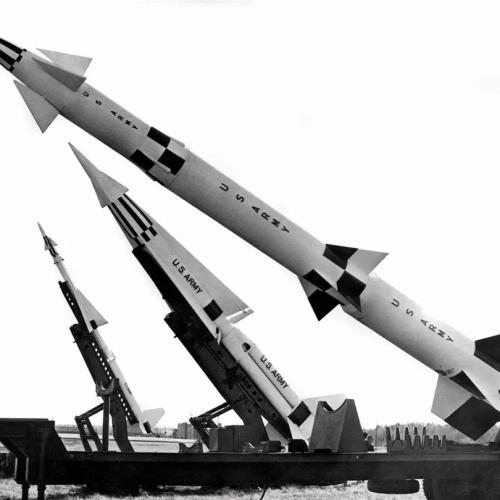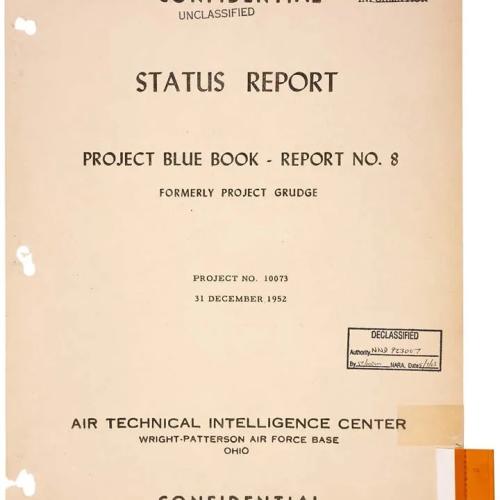Inspirational News Stories
Below are key excerpts of some of the most inspiring news articles from reliable news media sources. If any link fails to function, a paywall blocks full access, or the article is no longer available, try these digital tools.
For further exploration, delve into our Inspiration Center.
Twenty years ago today, a 46-year-old former Air Force captain sat down on the tracks in front of a train loaded with bombs at the Concord Naval Weapons Station. The ex-captain's name was S. Brian Willson. He was there to block the train ... to protest U.S. arms shipments to Central America. But nothing was blocked that day. Instead, the train barreled into him at 16 miles an hour, slicing off his legs and one ear and laying open his skull - and igniting what quickly became the nation's biggest anti-war movement in the decades between the Vietnam and Iraq eras. Today, however, there will be more than a memory on those dusty tracks. Willson plans to come back to the spot where he lost his legs to remember and pray for global harmony. It's a different time, with different wars, but he says he feels just as passionate as he did back then. "Maybe we'll have 10 people there, maybe 30, who knows?" Willson said by phone from his home in Arcata (Humboldt County). "I guess it'll be whatever it is. I do know this, though: We have to preserve our history. That's one good reason to be there, as painful as the memories will be for me. I have to look on life as a journey, and all I can say is I'm still on track," said Willson. "Running me over with a train wasn't just criminal, it was stupid. But it has not in any way stopped me. My life is good," he said. "I like the whole idea of pursuing what I call right livelihood, reducing my footprint on Earth. I enjoy it." The protest never truly ended. A couple of times a year, peace groups use the tracks as a setting for small anti-war gatherings - and every Monday, just as he has for the past 20 years, 53-year-old Concord resident Greg Getty, sits at the tracks at 9 a.m. and says a prayer in Willson's name.
Family mission statements are a way of transferring your highly effective business habits to your home life. Finding the time to assemble a document that outlines a family's goals and philosophy might seem unrealistic ... but believers urge a closer look at what they hail as a method for getting unwieldy modern lives back on track. Laura Puryear was introduced to the concept when her mother handed her Stephen Covey's The 7 Habits of Highly Effective Families. In Habits, the well-known motivational guru asks couples to consider questions such as: "If our family is a plane, are we on course?" Conflicting answers are OK; the point is to discuss differences en route to a common destination. "The pace of life, technology and culture all put greater pressure on us to decide what's really important," says Covey. "We all have values that guide us, but 95% of us never write them down. It's precisely the act of writing that imprints it in the subconscious." Start from a family foundation of trust and openness, where everyone feels welcome to participate. Schedule a time to share the mission statement concept, keeping in mind that even young children can understand and contribute. Brainstorm together about ideas for the statement. Encourage even the most off-the-wall contributions. Record all such suggestions in writing. Revisit the list regularly and pare it down to the most important ideas. Once everyone agrees on a final draft that truly summarizes the family's values and vision, make copies accessible to all. Avoid rushing your family, favoring any one person's agenda, or forgetting about the final product once you're done. The mission statement carries weight only if you actively pursue your stated goals.
Note: For a concise guide to developing your own personal mission statement or life intentions, click here.
Richard Branson is always reaching for something, whether it's setting records in stratospheric balloon flights or racing across the Atlantic pursuits that have nearly killed him, more than once. But Branson has never done things the conventional way. He is usually striving for something just beyond his grasp and, win or lose, he always comes up smiling. But his latest venture may be his most audacious. On July 18 his and Nelson Mandela's shared birthday they announced the formation of a Council of Elders, a group of seasoned world leaders who literally will try to solve the world's problems. "You only live once," he said. "You might as well throw yourself into life and enjoy it." These days, at age 57, Branson's preoccupations seem to have more to do with saving the world than conquering it. Being in the airline and train business, Branson says he has helped contribute to environmental degradation. But now he hopes to help repair the world. "For a while, I hoped the skeptics were right. But I read a lot, and met a lot of scientists, and realized the world had a real problem," Branson said. He is offering a $25 million prize for anyone who comes up with an invention that can rid the atmosphere of carbon gases, and he has pledged to spend all the profits from his airlines that's $3 billion or so to develop earth-friendly alternative fuels. "What we're hoping to do is actually come up with an alternative fuel that will shake the very foundations of the oil companies and shake the foundations of the coal companies because if we dont shake their foundations, the world could potentially be doomed. I certainly don't feel chosen, but I feel extremely grateful," he said. "I feel I'm in a position where I can make a difference, and I'm not going to waste that position I find myself in."
Oscar the cat seems to have an uncanny knack for predicting when nursing home patients are going to die, by curling up next to them during their final hours. His accuracy, observed in 25 cases, has led the staff to call family members once he has chosen someone. It usually means they have less than four hours to live. He doesnt make too many mistakes. He seems to understand when patients are about to die, said Dr. David Dosa in an interview. He describes the phenomenon in a poignant essay in [the July 26] issue of The New England Journal of Medicine. Many family members take some solace from it. They appreciate the companionship that the cat provides for their dying loved one, said Dosa, a geriatrician and assistant professor of medicine at Brown University. The 2-year-old feline was adopted as a kitten and grew up in a third-floor dementia unit at the Steere House Nursing and Rehabilitation Center. The facility treats people with Alzheimers, Parkinsons disease and other illnesses. After about six months, the staff noticed Oscar would make his own rounds, just like the doctors and nurses. Hed sniff and observe patients, then sit beside people who would wind up dying in a few hours. Dosa said Oscar seems to take his work seriously and is generally aloof. This is not a cat thats friendly to people, he said. Oscar is better at predicting death than the people who work there, said Dr. Joan Teno of Brown University, who treats patients at the nursing home and is an expert on care for the terminally ill. Most families are grateful for the advanced warning, although one wanted Oscar out of the room while a family member died. When Oscar is put outside, he paces and meows his displeasure.
When 42-year-old Cathleen Gardiner's twins were born 17 years ago, doctors told her they were a "pair in a million". One had Down's syndrome, while the other did not. Here, Cathleen [tells] their touching and inspiring story: Since Sean was born 17 years ago, I have always taken the view that he is just as wonderful and special as my other two children. While he may have a disability, none of us have ever viewed him as a burden, and ... I refuse to see him as anything but a blessing. The doctors explained that as they were fraternal twins, meaning they came from two eggs ... Lisa was not affected by the condition. Lisa walked at 11 months, while Sean didn't take his first steps till he was three. By two, Lisa was quite the conversationalist, but Sean wasn't able to form sentences until he was nearly four. For the first five years of his life, Sean needed a great deal of care. There was no question of me going back to my job as a technical adviser in a computing company. Looking after him was a fulltime job. Yet despite the considerable difference between the twins, we never treated them differently. We gave them the same toys and spoke to them the same way. Our attitude was that by encouraging Sean to keep up with Lisa, even though he would never manage it, we would be helping him to fulfil his potential. We sent them to the same primary school after doctors advised us that Sean could go to a mainstream school, but we had to explain to Lisa that he wouldn't learn as quickly as she would. She told us ... that she'd help him with his school work. Having a non-disabled twin has really helped Sean to develop - the love they share has given him a unique support in a tough world, and I'm not sure he would have done nearly as well if he didn't have Lisa fighting his corner every step of the way.
The Elders, a new alliance made up of an elite group of senior statesmen dedicated to solving thorny global problems, unveiled itself today in Johannesburg. The members include [Nelson Mandela, the former South African president,] Desmond Tutu, South African archbishop emeritus of Capetown; former U.S. President Jimmy Carter; former U.N. Secretary General Kofi Annan; Mary Robinson, former president of Ireland and Mohammed Yunus, the Nobel laureate and founder of the Green Bank in Bangladesh. The group plans to get involved in some of the world's most pressing problems -- climate change, pandemics like AIDS, malaria, tuberculosis, [and] violent conflicts. Under a large white futuristic dome, British billionaire Richard Branson and rock star Peter Gabriel, who conceived the idea for the Elders, gathered enough star power to change the world, or at least that's the hope. "The structures we have to deal with these problems are often tied down by political, economic and geographic constraints," Mandela said. The Elders, he argued, will face no such constraints. Seven years ago, Branson and Gabriel approached Mandela about the Elders idea, and he agreed to help them recruit others. "This group of elders will bring hope and wisdom back into the world," Branson said. "They'll play a role in bringing us together. "Using their collective experience, their moral courage and their ability to rise above the parochial concerns of nations, they can help make our planet a more peaceful, healthy and equitable place to live," Branson said. "Let us call them 'global elders,' not because of their age but because of individual and collective wisdom."
When a gunman crashed a garden party at [a] private Capitol Hill home ... around midnight on June 16, guests were just finishing up a summer meal ... when a man with a hood over his head entered through the back patio and put a gun to the head of a fourteen-year-old girl. "Everybody give me your money. I am being very serious," the gunman said, according to witnesses. None of the guests had any cash. Guest Michael Rabdau, 51, whose daughter was being held at gunpoint, even put his hands in his pockets and pulled them out to prove he had nothing. But another guest, Cristina Rowan, 41, had something different for the young man: a lecture. Striking a parental tone, she asked him what his mother would think if she saw him doing this. The gunman replied, "I don't have a mother." At this point, there was dramatic shift in the group dynamic. Rowan told the young man to calm down and have a glass of wine. "Damn, that's really good wine!," the gunman exclaimed. After a few sips, the man relaxed and slowly put his weapon away. "He took a piece of cheese and we filled his glass and he said, 'you know, I think I came to the wrong house,'" Rabdau recalled. Before leaving, the man asked if he could have a group hug. The group was perplexed. Just moments before, the man was threatening their lives. Nevertheless, they agreed to the unusual request. The gunman had one more sip of wine, then quietly apologized and left the same way he came in. After the police arrived, a lone crystal wine glass was found, carefully placed to the side in the alley near the home.
But my secret is hidden within me, my name no one shall know. Those are the words, roughly translated, from the famous Puccini aria Nessun Dorma. Youve probably heard Luciano Pavarotti sing it once or twice, and the song has made its way into many films. But it has never had so much meaning as it did on a stage in Great Britain, being sung by a mobile phone salesman named Paul Potts. Potts is an average-looking bloke whose teeth arent straight, and he admits to having battled self-confidence issues his whole life. Still, he decided to audition for a television show called Britains Got Talent. Beat box artists, break dancers and jugglers combined with a few people trying to be pop stars. On his first night, Potts took to the stage and sang that famous aria from Turandot, after telling judge Simon Cowell that he felt he needed to pursue his first love, opera. You could hear the snickers from the crowd, see Simons telltale eye roll, and practically feel the ... sweat rolling down Potts brow. But then he sang. From the first note floating from his snaggle-toothed beak, it was clear there was no competition for him in that room.The crowd gave him a standing ovation in what is now one of the Internets most popular viral videos. It has been viewed on YouTube alone more than 2.4 million times. Whats the reason for this Pottsmania? Its something my high school English teacher called the triumph of the human spirit. Watch the video, seriously.
Note: To watch the incredibly moving four-minute video of Paul's audition, click here.
A garage in an Auckland suburb is an unlikely laboratory for a 57-year-old millionaire with a passion to change the world. But Ray Avery is anything but typical. A charismatic Kiwi ... he's taken a horrific childhood, combined it with a passion and prodigious aptitude for science and turned it into a motivation to change the world. Ray now runs Medicine Mondiale, a non-profit aid organisation dedicated to doing things differently. Medicine Mondiale is based from his home ... and his garage has been converted into high tech lab. Here Ray works designing and developing simple and sustainable medical solutions for the many health problems in the developing world. He enlists the help of other scientists and experts to work on specific projects with him. Ray dragged himself up by the bootstraps, from a childhood in orphanages and on the streets of London, to become a scientist, businessman and self-made millionaire. After coming to New Zealand, a chance meeting with Fred Hollows (world renowned eye surgeon) set him on a path to Eritrea and Nepal to build lens factories for the Fred Hollows Foundation. Exposure to the raw and real shortcomings of heath care in these regions made him determined to use his knowledge of pharmaceuticals, science, project management, design and development to tackle the issues at a very practical level.
The genocide in Rwanda 12 years ago was the most efficient ever carried out. 800,000 people were slaughtered in 100 days. One incredible and inspiring survivors tale has come to light only recently. It took Immaculee Ilibagiza, a college-educated young woman from a remote village, many years before she could confront the horrors she lived through. She is speaking out now, she says, to prevent further atrocities. It was extremely low tech ... just machetes, spears and knives, wielded by Hutus, the majority tribe as they tried to wipe out the minority Tutsis. [They] were slaughtered in their tracks, wherever they were found. When it was over, three out of every four Tutsis in Rwanda had been killed. When it began, Immaculee's father told her to run to a ministers house three miles away, and to beg him to hide her. The minister was a Hutu. [He] put Immaculee and six other women in a tiny, rarely used bathroom in a remote corner of the house. Seven women were huddled in a bathroom measuring three feet by four feet, for 91 days. They took turns standing and stretching. "They were searching. They were there all the time," Immaculee remembers. She lost 40 pounds one third of herself. What prompted the genocide? The Hutus had long-standing resentments against the Tutsis, who formed the nation's elite. There are things you can point to, but ... what could possibly explain what happened? Immaculee knows Rwandans can never forget but believes they must forgive. Revenge ... only prolongs the pain. Now she's a woman on a mission to spread the story ... hoping it can prevent future atrocities. She has giving lectures; she has written a book; and she is determined to stop the inevitable revisionists who claim the genocide never happened.
Note: An intense video clip of this story is available at the CBS link above. This article fails to mention the key fact that top officials in developing nations knew very well of the mass murder as it was happening, yet refused to send help. This is graphically portrayed in the powerful movie Hotel Rwanda. Immacullee's amazing book, Left to Tell, has been an huge inspiration to many people around the world.
The lesson began with the striking of a Tibetan singing bowl to induce mindful awareness. With the sound of their new school bell, the fifth graders at Piedmont Avenue Elementary School here closed their eyes and focused on their breathing, as they tried to imagine loving kindness on the playground. I was losing at baseball and I was about to throw a bat, Alex Menton, 11, reported to his classmates the next day. The mindfulness really helped. Students at dozens of schools across the country are trying hard to be in the present moment. This is what is known as mindfulness training, in which stress-reducing techniques ... are wedged between reading and spelling tests. Mindfulness, while common in hospitals, corporations, professional sports and even prisons, is relatively new in the education of squirming children. But a small but growing number of schools in places like Oakland and Lancaster, Pa., are slowly embracing the concept ... and institutions, like the psychology department at Stanford University and the Mindfulness Awareness Research Center at the University of California, Los Angeles, are trying to measure the effects. During a five-week pilot program at Piedmont Avenue Elementary, Miss Megan, the mindful coach, visited every classroom twice a week, leading 15 minute sessions on how to have gentle breaths and still bodies.
Power cables and even batteries might become a thing of the past using a new technique that can transmit power wirelessly. Scientists lit a 60-watt light bulb from a power source 7 feet (2 meters) away with their new technique, with no physical connection between the source and the appliance. The researchers have dubbed their concept "WiTricity," as in "wireless electricity." MIT physicist Marin Soljacic began thinking years ago about how to transmit power wirelessly so his cell phone could recharge without ever being plugged in. Scientists have pursued wireless power transmission for years notably, eccentric genius Nikola Tesla, who devoted much energy toward it roughly a century ago. Soljacic and his colleagues devised WiTricity based off the notion of resonance. One well-known example of resonance can be seen when an opera singer hits the right note to cause a champagne glass to resonate and shatter. Two objects resonating at the same frequency tend to exchange energy efficiently, while interacting weakly with objects not resonating at the same frequency. Instead of sound, the MIT physicists focused on magnetic fields. Most common materials interact only very weakly with magnetic fields, so little power would get wasted on unintended targets. In their latest work, the scientists designed two copper coils roughly 20 inches (50 centimeters) in diameter that were specially designed to resonate together. One was attached to the power source, the other to a light bulb. The practical demonstration of their earlier theoretical work managed to power the light bulb even when obstacles blocked direct line of sight between the source and device.
Note: For more on Nikola Tesla's amazing inventions from a century ago, and how they were suppressed, click here. For lots of additional information on new energy sources and inventions, click here.
Indias largest automaker is set to start producing the worlds first commercial air-powered vehicle. The Air Car, developed by ex-Formula One engineer Guy Ngre for Luxembourg-based MDI, uses compressed air, as opposed to the gas-and-oxygen explosions of internal-combustion models, to push its engines pistons. Some 6000 zero-emissions Air Cars are scheduled to hit Indian streets in August of 2008. Barring any last-minute design changes on the way to production, the Air Car should be surprisingly practical. The $12,700 CityCAT, one of a handful of planned Air Car models, can hit 68 mph and has a range of 125 miles. It will take only a few minutes for the CityCAT to refuel at gas stations equipped with custom air compressor units; MDI says it should cost around $2 to fill the cars carbon-fiber tanks with 340 liters of air at 4350 psi. Drivers also will be able to plug into the electrical grid and use the cars built-in compressor to refill the tanks in about 4 hours. Of course, the Air Car will likely never hit American shores, especially considering its all-glue construction. But that doesnt mean the major automakers can write it off as a bizarre Indian experiment MDI has signed deals to bring its design to 12 more countries, including Germany, Israel and South Africa.
Note: For a cornucopia of exciting articles on new automobile designs and energy inventions, click here.
A financial analyst who was devastated when she lost her sight has taken up a new career: painting. Lisa Fittipaldi ... has created more than 400 works of art. Her pictures now sell from $2,800 to $10,000 and hang in some of the most exclusive galleries in the United States. Mrs Fittipaldi was robbed of her sight seven years ago by a degenerative vascular disease. The gift of a child's water colour set has changed her life. Her husband, Al, gave her the painting kit to stop her feeling sorry for herself. Even though Lisa had never painted before, a star of the art world was born. She does not do abstracts, but instead paints images from memories from her travels. She uses a technique she describes as mental mapping to work her way around a canvas, by dividing it up into quadrants. And how does she find the right colours? "In water colours, I used to differentiate between colours by dipping my fingers in it," she said. "The pigment of blue is a little bit drier, a bit stickier than red." She is encountering new hurdles as she attempts to progress from water colours to oils. One dollop of oil paint feels identical to another. Lisa's husband is still amazed. "When she first picked up a brush and started doing water colours, I just couldn't believe that this could be happening," said Al Fittipaldi, glowing with pride. "But now I just accept it and we move on with it and her work just keeps getting better and better." For how much longer will Lisa be able to transfer her inner vision to the canvas? The disease that made her blind is slowly crippling her body. She says she will never give up painting and says her ambition is to travel to India to paint a thousand people bathing in the Ganges.
Note: To visit Lisa Fittipaldi's website, click here. For other inspiring articles like this, click here.
Retired TV station owner and broadcast engineer, John Kanzius, wasn't looking for an answer to the energy crisis. He was looking for a cure for cancer. Four years ago, inspiration struck in the middle of the night. Kanzius decided to try using radio waves to kill the cancer cells. His wife Marianne heard the noise and found her husband inventing a radio frequency generator with her pie pans. "I got up immediately, and thought he had lost it." Here are the basics of John's idea: Radio-waves will heat certain metals. Tiny bits of certain metal are injected into a cancer patient. Those nano-particals are attracted to the abnormalities of the cancer cells and ignore the healthy cells. The patient is then exposed to radio waves and only the bad cells heat up and die. But John also came across yet another extrordinary breakthrough. His machine could actually make saltwater burn. John Kanzius discovered that his radio frequency generator could release the oxygen and hydrogen from saltwater and create an incredibly intense flame. "If that was in a car cylinder you could see the amount of fire that would be in the cylinder." The APV Company Laboratory in Akron has checked out John's ... invention. They were amazed. "That could be a steam engine, a steam turbine. That could be a car engine if you wanted it to be." Imagine the possibilities. Saltwater as the ultimate clean fuel. A happy byproduct of one man searching for the cure for cancer.
Note: Though this exciting breakthrough was reported in dozens of local media, not one major news outlet found it worthy of mention. To verify this yourself, click here.
What Ray Anderson calls his conversion experience occurred in the summer of 1994, when he was asked to give the sales force at Interface, the carpet tile company he founded, some talking points about the companys approach to the environment. So he started reading about environmental issues, and thinking about them, until pretty soon it hit him: I was running a company that was plundering the earth, he realized. I thought, Damn, some day people like me will be put in jail! He devoted his speech to his newfound vision of polluted air, overflowing landfills, depleted aquifers and used-up resources. Only one institution was powerful enough and pervasive enough to turn these problems around, he told his colleagues, and it was the institution that was causing them in the first place: Business. Industry. People like us. Us!" He challenged his colleagues to set a deadline for Interface to become a restorative enterprise, a sustainable operation that takes nothing out of the earth that cannot be recycled or quickly regenerated, and that does no harm to the biosphere. The deadline they ultimately set is 2020, and the idea has taken hold throughout the company. Mr. Anderson said that through waste reduction, recycling, energy efficiency and other steps, Interface was about 45 percent from where we were to where we want to be. Use of fossil fuels is down 45 percent ... he said, while sales are up 49 percent. Globally, the companys carpet-making uses one-third the water it used to. The companys worldwide contribution to landfills has been cut by 80 percent. And in the process, Mr. Anderson has turned into perhaps the leading corporate evangelist for sustainability.
Many respected engineers have been trying for years to bring a compressed air car to market, believing strongly that compressed air can power a viable "zero pollution" car. Now the first commercial compressed air car is on the verge of production and beginning to attract a lot of attention, and with a recently signed partnership with Tata, India's largest automotive manufacturer, the prospects of very cost-effective mass production are now a distinct possibility. The MiniC.A.T is a simple, light urban car. How does it work? 90m3 of compressed air is stored in fibre tanks. The expansion of this air pushes the pistons and creates movement. It is incredibly cost-efficient to run according to the designers, it costs less than one Euro per 100Km (about a tenth that of a petrol car). Its mileage is about double that of the most advanced electric car (200 to 300 km or 10 hours of driving), a factor which makes a perfect choice in cities where the 80% of motorists drive at less than 60Km. The car has a top speed of 68 mph. Refilling the car will ... take place at adapted petrol stations to administer compressed air. In two or three minutes, and at a cost of approximately [US$2] the car will be ready to go another 200-300 kilometres. As a viable alternative, the car carries a small compressor which can ... refill the tank in 3-4 hours. At the moment, four models have been made: a car, a taxi (5 passengers), a Pick-Up truck and a van. The final selling price will be approximately [US$11,000]. "Moteur Development International" (MDI) ... has researched and developed the Air Car over 10 years.
Note: Why aren't U.S. automakers interested in this breakthrough technology? For abundance of reliable information on the exciting new developments in auto design for super-efficient mileage, click here.
Fifteen years ago, then-Gov. Bill Clinton got him fired from his job as "leader of the free world." But that doesn't seem to bother former President George H.W. Bush too much these days. The political odd couple -- one a gregarious baby boomer, the other a genteel guardian of the greatest generation and both members of the world's most exclusive club of former American presidents -- was on the road again this weekend. They've helped raise more than $1 billion in U.S. aid for tsunami victims and more than $130 million for those devastated by Hurricane Katrina. No matter what the future may hold for either the Bush or Clinton clan, it's clear the friendship struck between two formal rivals is not just for show. "I cannot tell you the selfish pleasure I get out of working with President Clinton," Bush told the near graduates of the University of New Hampshire. "It's a very selfish feeling I have in my heart that we can be out there transcending politics, doing something to help others." Clinton returned the compliment. "Our differences are important; they matter. They make life more interesting and they aid the search for truth," he said, "but our common humanity matters more." President Clinton, who spoke of "seeing" and recognizing ourselves in others, said, "There's nothing beyond the reach of our common endeavor because it's our common endeavor." "You don't have to be a president to be a leader and to touch the lives of your fellow countrymen," former President Bush said.
Highly-paid professionals like doctors and lawyers didn't make the cut when researchers set out to find the most satisfied workers. Clergy ranked tops in both job satisfaction and general happiness, according to the National Opinion Research Center [NORC] at the University of Chicago. Physical therapists and firefighters were second- and third-ranked in job satisfaction, with more than three-quarters reporting being "very satisfied." Other occupations in which more than 60 percent said they were very satisfied included teachers, painters and sculptors, psychologists and authors. "The most satisfying jobs are mostly professions, especially those involving caring for, teaching and protecting others and creative pursuits," said Tom W. Smith, director of NORC's General Social Survey. Intrinsic rewards are key, the study suggests. "They're doing work they're very proud of, helping people," Smith said. Clergy ranked by far the most satisfied and the most generally happy of 198 occupations. Eighty-seven percent of clergy said they were "very satisfied" with their work, compared with an average 47 percent for all workers. Others in helping professions describe their work as a calling. "I believe I was probably put on this earth to make someone's life a little easier," said Gina Kolk, [a] physical therapist. "I get rewarded every day by what I do." Occupations with the least satisfied and happy workers tended to be low-skill manual and service jobs. Roofers, waiters and laborers ranked at the bottom ... with as few as one in five reporting they were very satisfied. Bartenders, known for listening to other people's troubles, apparently need sympathetic ears: Only 26 percent said they were very satisfied.
Ryan Mickle's life was the stuff young bourgeois dreams are made of. Then a year ago ... Mickle began to take stock of his life. He was earning a lot of money but was giving very little of himself. So Mickle ditched his high-paying job to brainstorm a new venture with friend Rod Ebrahimi. The result was Dotherightthing.com, a San Francisco startup that allows users to rank companies based on their social impact on the world. Their site [allows] consumers to influence corporate behavior. The sentiment is summed up in Dotherightthing.com's T-shirt slogan: "It's cool to care." Mickle, 26, and Ebrahimi, 25, are among a growing number of entrepreneurs betting they can build ventures that deliver both financial and social returns. EBay founder Pierre Omidyar has dedicated much of his fortune to helping for-profits and nonprofits alike discover their power to do good. At www.freepledge.com, shoppers buy the same products from the same merchants for the same price, but a percentage is donated to the nonprofit of their choice. Darian Hickman, 28, is designing an online strategy game that turns the players into entrepreneurs who help bring prosperity to impoverished villages in underdeveloped countries. [He was] inspired by Muhammad Yunus, the Nobel prize-winning micro-finance pioneer. Premal Shah [is a] former PayPal executive who is president of online micro-lender Kiva.org. Brian Johnson, 32 ... said he felt uncomfortable with capitalism until he hit on the concept of "using economics as a force for good. How do we live our spiritual ideals and make money?" Now Johnson tries to have it both ways with Zaadz.com, which he describes as MySpace for people who want to change the world.
Note: We encourage you to take some time to explore some of these exciting new adventures which are transforming the face of business and building a brighter future for us all. For more on micro-finance, micro-lending, and how you can help end poverty without donating a penny, click here. And for the profile of website founder Fred Burks on Zaadz.com, click here.
Important Note: Explore our full index to revealing excerpts of key major media news stories on several dozen engaging topics. And don't miss amazing excerpts from 20 of the most revealing news articles ever published.













